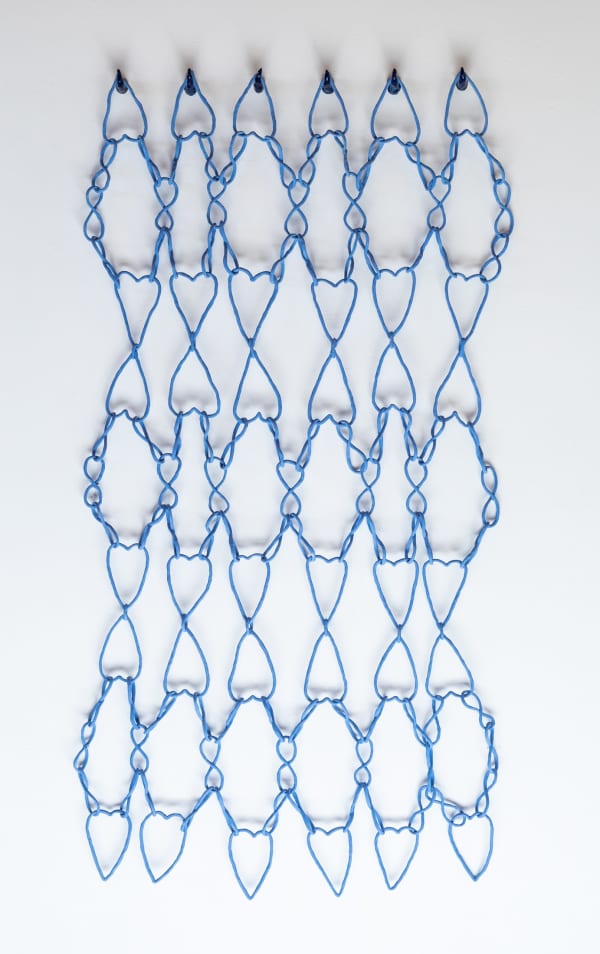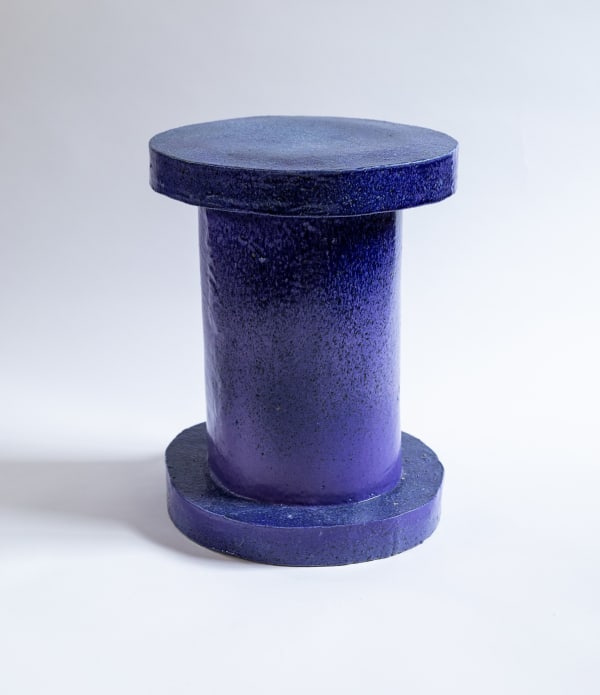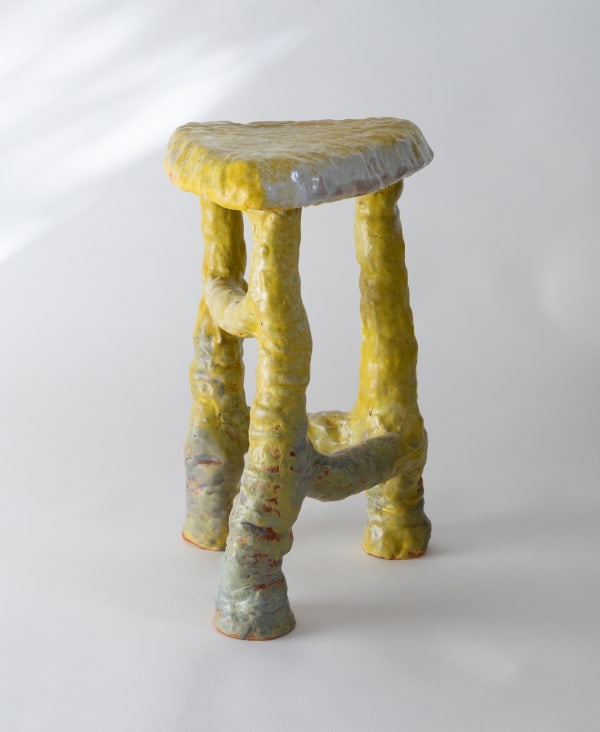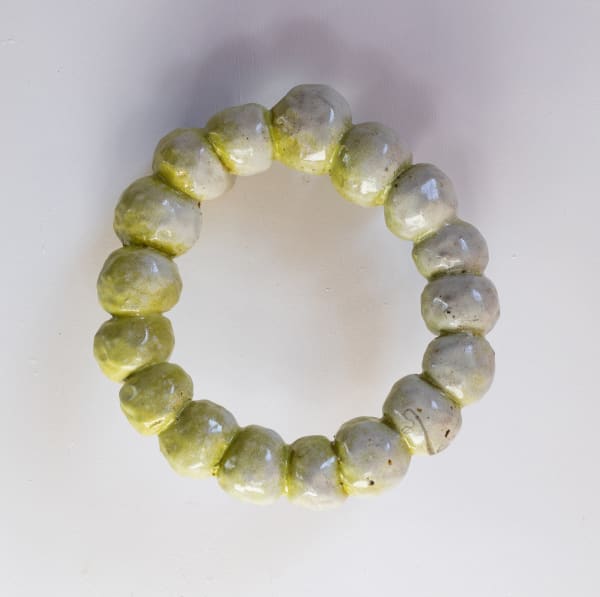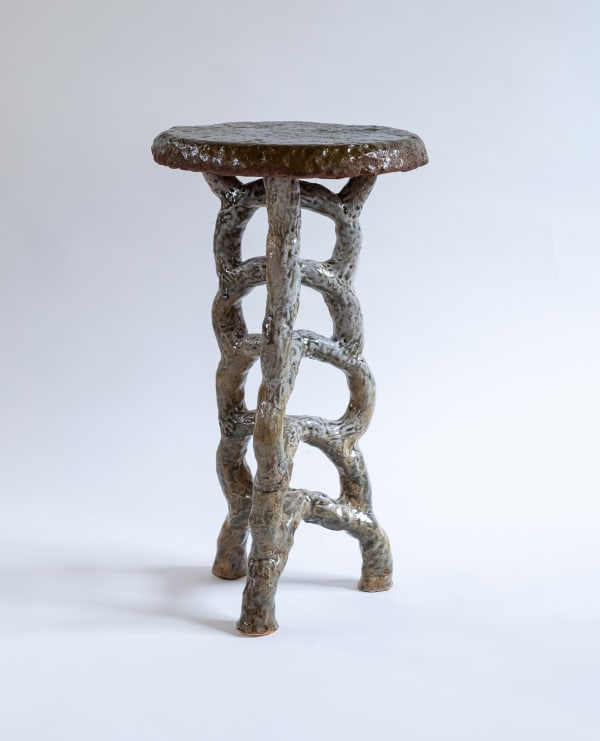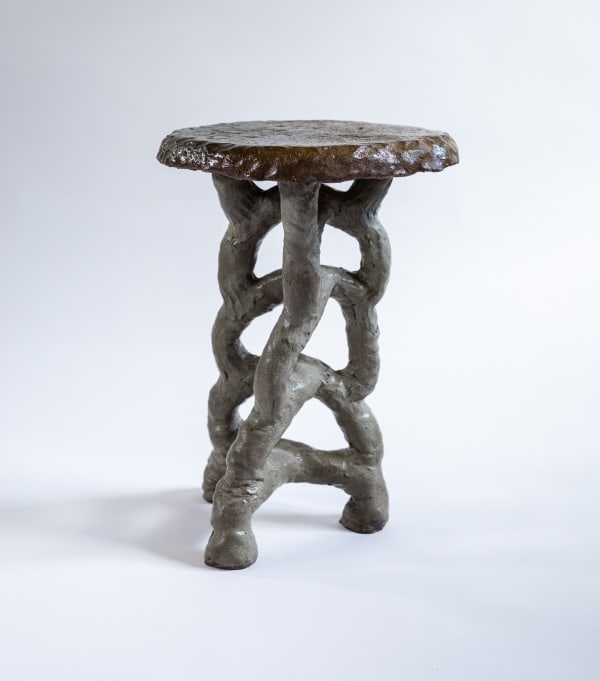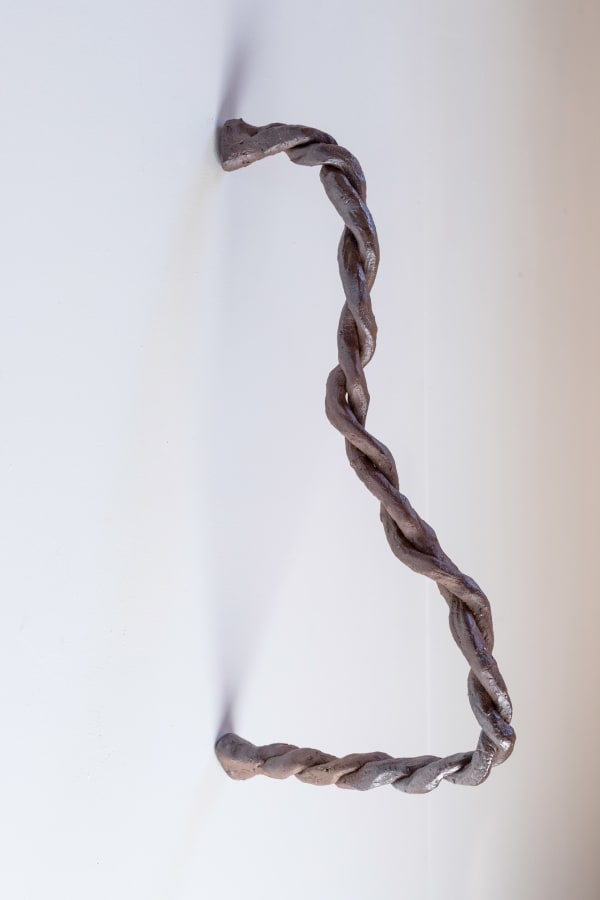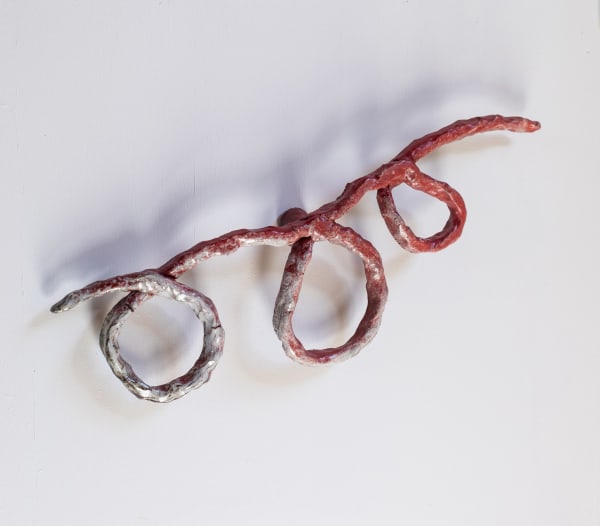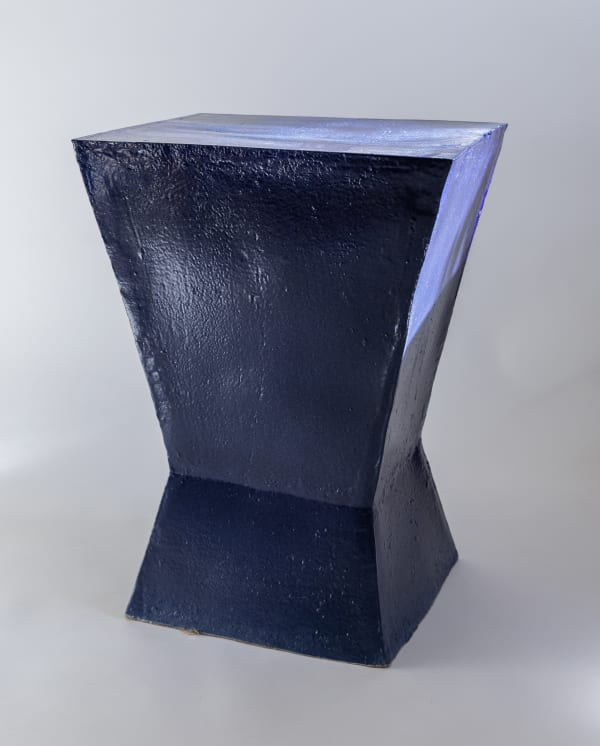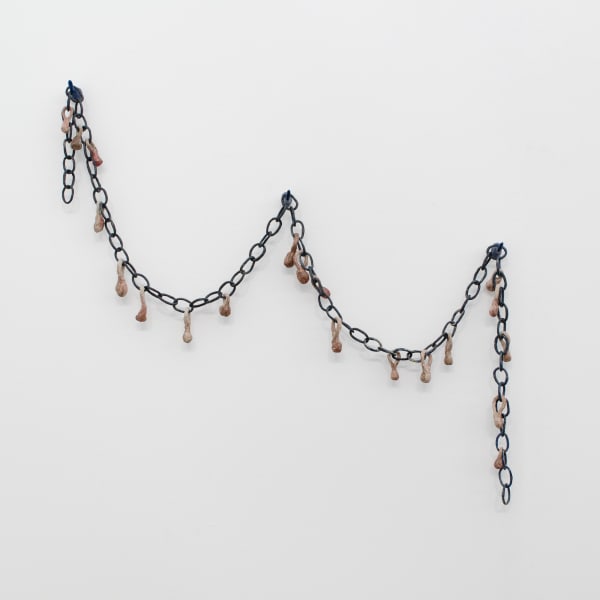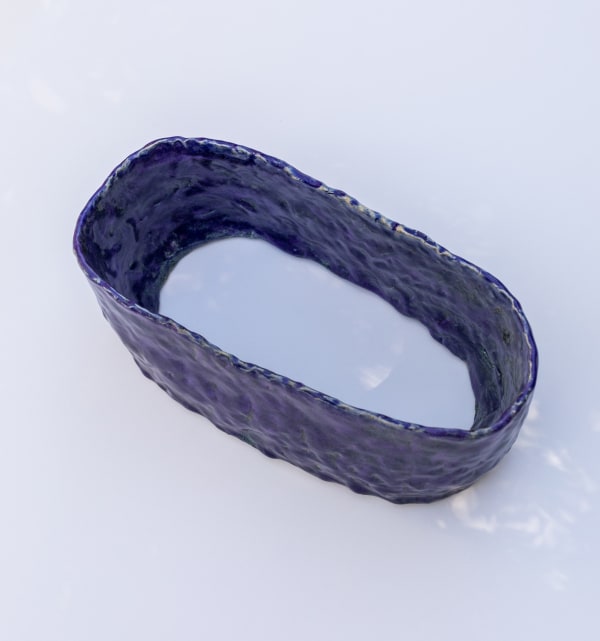-
We are pleased to present a solo exhibition by Jaime Jenkins at the Aotearoa Art Fair 2022.
This new body of work sees Jaime continue her investigations into functionality and fragility, weight and weightlessness, the organic and the handmade. Jaime says she often find herself with a desire to shift from one of these modes into another: after making a heavy, floor-based work she might carry on to a light, suspended form. It’s in the space between that this group of work finds its balance.
These are works made to be lived with. They bring the outside in — drawing from the time Jaime spends in nature, exploring the various shifts and moods of the landscapes which surround her. The resulting ceramic sculptures are uniquely her own, defined by a particular way of looking at and feeling through things. Jaime has said before that she’s “always trying to go somewhere beautiful”; these works takes us there.Notes/
Some of Jaime's floor works have cracks in them. These are not structural and in some places Jaime has filled them with resin. There are detailed shots of all the cracks in the detailed page of the artworks, however, please get in touch if you are unsure about this.
The cost of shipping will be added to all works sold to buyers out of Tāmaki Makaurau.
-
-
 Jaime Jenkins, Forever Love, 2022View details
Jaime Jenkins, Forever Love, 2022View details -
 Jaime Jenkins, Gentle Machine, 2022View details
Jaime Jenkins, Gentle Machine, 2022View details -
 Jaime Jenkins, Happiness, 2022View details
Jaime Jenkins, Happiness, 2022View details -
 Jaime Jenkins, Heightened, 2022View details
Jaime Jenkins, Heightened, 2022View details
-
 Jaime Jenkins, Lucky Ducky, 2022View details
Jaime Jenkins, Lucky Ducky, 2022View details -
 Jaime Jenkins, Near, 2022View details
Jaime Jenkins, Near, 2022View details -
 Jaime Jenkins, New Worlds, 2022View details
Jaime Jenkins, New Worlds, 2022View details -
 Jaime Jenkins, Nonchalant Sky, 2022View details
Jaime Jenkins, Nonchalant Sky, 2022View details
-
 Jaime Jenkins, Patience of Stone, 2022View details
Jaime Jenkins, Patience of Stone, 2022View details -
 Jaime Jenkins, Pinch I, 2022View details
Jaime Jenkins, Pinch I, 2022View details -

-
 Jaime Jenkins, Quiet Life, 2022View details
Jaime Jenkins, Quiet Life, 2022View details
-

-
 Jaime Jenkins, Wallflower I, 2022View details
Jaime Jenkins, Wallflower I, 2022View details -
 Jaime Jenkins, Wallflower II, 2022View details
Jaime Jenkins, Wallflower II, 2022View details -
 Jaime Jenkins, Wallflower III, 2022View details
Jaime Jenkins, Wallflower III, 2022View details
-
 Jaime Jenkins, Dusk Falters, 2022View details
Jaime Jenkins, Dusk Falters, 2022View details -
 Jaime Jenkins, Lightning Kisses, 2022View details
Jaime Jenkins, Lightning Kisses, 2022View details -
 Jaime Jenkins, Charmed, 2022View details
Jaime Jenkins, Charmed, 2022View details -
 Jaime Jenkins, Clueless, 2022View details
Jaime Jenkins, Clueless, 2022View details
-
 Jaime Jenkins, Evermore, 2022View details
Jaime Jenkins, Evermore, 2022View details -
 Jaime Jenkins, Ledge I, 2022View details
Jaime Jenkins, Ledge I, 2022View details -
 Jaime Jenkins, Ledge II, 2022View details
Jaime Jenkins, Ledge II, 2022View details -
 Jaime Jenkins, Ledge III, 2022View details
Jaime Jenkins, Ledge III, 2022View details
-
 Jaime Jenkins, Drifter, 2022View details
Jaime Jenkins, Drifter, 2022View details -

-
 Jaime Jenkins, Scotty’s Yellow, 2022View details
Jaime Jenkins, Scotty’s Yellow, 2022View details -
 Jaime Jenkins, Boots, 2022View details
Jaime Jenkins, Boots, 2022View details
-
-
Blue
When I visited Jaime in her studio earlier this year, I was struck by the environment she works in — in the middle of a landscape that is fertile, lively, and all-enveloping. It was a bright late-winter morning, as we wound out of busy Mount Maunganui, up into the quiet hills of Ohauiti. I remember being surprised at our distance from the ocean — having always associated Jaime with the water. I mention this to her and she smiles, telling me that while she usually makes her work with a domestic space in mind, Fleeting Hour belongs to the coastline.
Then, the works were in various stages of development. Some large, solid forms sat in the corner, glazed and fired. On a bench sat another large work- in-progress: the careful architecture of its various pieces a reminder of the mechanics each structure involves. A few smaller floor-based sculptures, these ones formed from delicate webs of clay, were waiting for their final firing, glaze already applied. And, down the other end of the studio, another family of work — some bisqued, the rest drying.
Seeing Jaime’s work in progress, the demanding process of working with clay — shaping, drying, firing, glazing, and firing again — and the volatility of each of the various steps is clear. At every stage, the artworks undergo a form of transformation, changing shape, texture, colour. All these interventions into the clay, and then what seems like the impossibility of anticipating how everything will come together — or explode — in the kiln.
Yellow
Jaime shows me some test firings, sitting beside careful notes on each of the glazes. Colour is one of the things that makes her work unexpected. There is the scale and structure of things, and then there is the colour — pure swathes of dense colour. For whatever reason, the yellow is the biggest surprise, although she’s worked with it before. It wraps around sturdy, solid shapes and climbs up wobbly ones. My trip to Ohauiti happens just as kōwhai are coming into bloom, and for weeks afterwards the little yellow flowers are a reminder of Jaime’s work, which is slowly moving towards completion.
Jaime has talked before about wanting to make everyday objects out of clay — things we might not expect — which is where the functionality of many of the objects comes from: places to sit, to put a cup, arrange some flowers. In other works, it opens new possibilities: a yellow ceramic curtain that doesn’t block light but seems to give physical form to the effect of dappled sunlight — a dividing structure that grants new shape to the space behind it, more than it does block it off.
Green
Those greens: bright spring leaves and deeper, mossy forest tones. They appear to come straight from nature, as do the other defining characteristics of Jaime’s work — the constant play between presence and absence, her ongoing exploration of the relationship between lightness and solidity, the desire to find equilibrium between extremes — taking their cues from the delicate balance of the world beyond the studio.
That said, it’s not so simple as bringing the outside in. The artworks themselves are resolutely handmade: Jaime’s interventions into her materials are clear. And even — perhaps especially — the most organic forms are countered by staunchly geometric forms: like a string of green leaves, held together by ceramic link chain.
Jaime says she often find herself with a desire to shift from one of these modes into another — after making a heavy, floor-based work she might carry on to a light, suspended form — and you can see that in Fleeting Hour, where she’s taken the opportunity to stretch, finding new ways to make the space her own.
Brown
These are artworks made to be lived with: they invite interaction and activation. Wall-mounted vases, waiting for flowers; hanging tapestries, ready to catch the light; uneven textures to run a hand along; flat surfaces for other objects to rest. Jaime is interested in the life of artworks, seeing them to be in constant conversation with the spaces they occupy. To these spaces, her objects bring the process of their making with them. The careful, forceful moods of the kiln: unexpected colours, changing shapes. Cracks are carefully filled with resin – fragility recognised, acknowledged, and countered.
As the day passes at Jaime’s studio, the light changes. Just as we go to leave, I walk around the artworks once more. In this new light, details I haven’t noticed before suddenly appear. On a large, finished ledge, I see an unexpected texture and take a closer look. There it is – perfect and clear — the imprint of a palm, followed by outstretched fingers. Everywhere: the presence of her hand.
Hanahiva Rose, November 2022
Jaime Jenkins, Fleeting Hour: Aotearoa Art Fair
Past viewing_room

